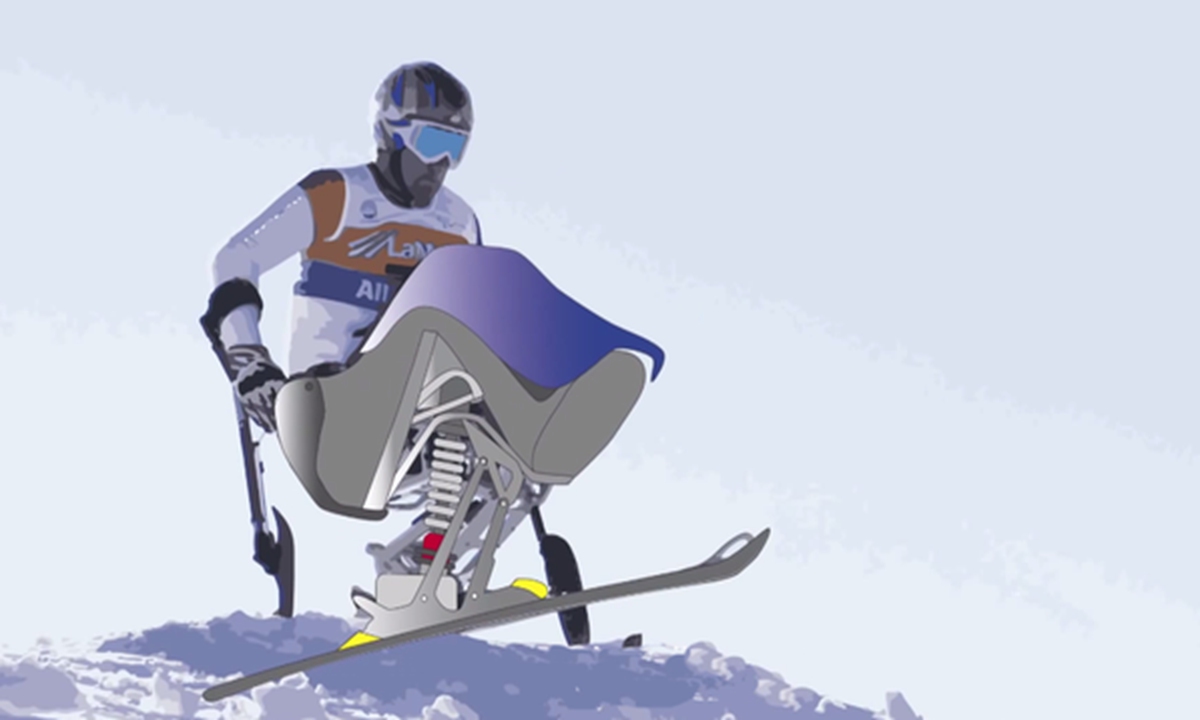
Photo: Sina Weibo
Para alpine skiing features six disciplines including downhill, slalom, giant slalom, super-G, super combined and team events. Athletes combine speed and agility while racing down slopes at speeds of around 100 kilometers an hour, and need to pass through a high number of gates. If an athlete misses a gate they are disqualified.
This is a big challenge for athletes with leg impairments. They are allocated to different sport classes depending on their sitting balance, which is very important for acceleration and balancing during the races.
The introduction of sit-ski allowed people in wheelchairs (paraplegics and double above-the-knee amputees) to begin to ski and race. Sit-skiers usually have amputations of both legs and spinal cord injuries, and can participate in the event by using sit-on skis.
However, the equipment does not guarantee 100 percent safety for athletes. A foreign study shows that the injury rate of athletes in the seated group was very high, which is about 16.1 times of getting injured per 1,000 ski days.
For athletes, they need to become the "driver" of the ski.
Athletes should bring their bodies closer to the flag gate to reduce the turning radius, and at the same time maintain a faster cornering speed to cushion the impact of the snowboard on the body. In addition, they can use poles with short snow knives at the end to add balance and help with turns.
Sit-skiing was introduced as a demonstration sport at the Innsbruck 1984 Paralympics and became a medal event at the Nagano 1998 Games.




